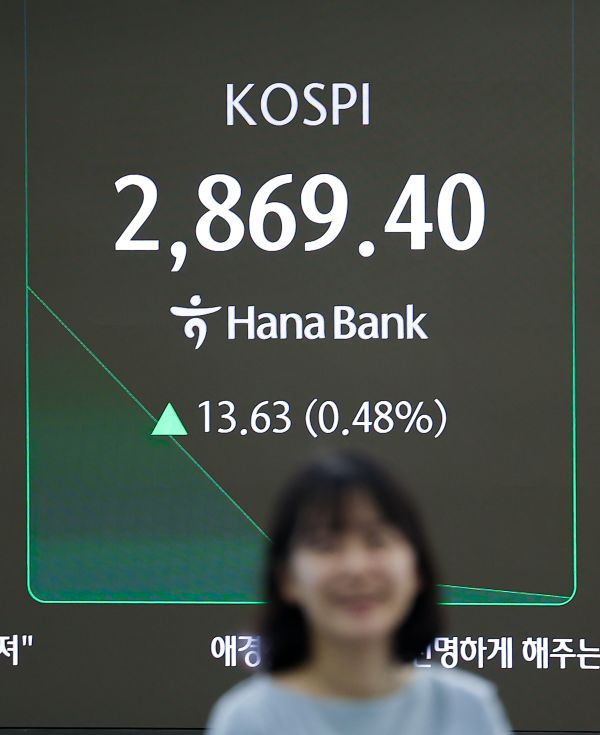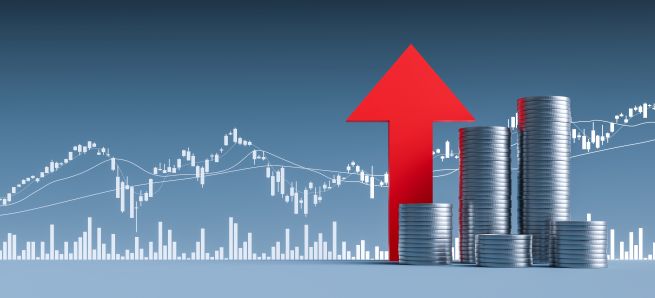Seoul, June 10 (Korea Bizwire) — Foreign investors have poured nearly 4 trillion won into South Korea’s stock markets so far this month, igniting fresh optimism that the benchmark KOSPI index could break through the symbolic 3,000-point barrier in the coming weeks.
According to financial data provider Yonhap Infomax, foreign investors have recorded net purchases of 3.13 trillion won in the KOSPI over just the first four trading days of June. The surge began in earnest on June 4, the day the new Lee Jae-myung administration was inaugurated, with foreign buying totaling over 1 trillion won that day alone.
Buying momentum continued throughout the week, with foreign investors purchasing nearly 1 trillion won each on June 5 and June 9. By midday Tuesday, an additional 347.1 billion won had been bought, suggesting the foreign inflow trend could extend to a fifth consecutive day.
Adding nearly 400 billion won in net purchases on the KOSDAQ this month, the total foreign inflow into South Korean equities has reached approximately 4 trillion won.
This marks a striking reversal in sentiment. From August 2024 to April 2025, foreign investors had been net sellers of KOSPI stocks for nine straight months — the longest selloff streak since the 2007–2008 global financial crisis.

Dealers work at the Hana Bank dealing room in Jung-gu, Seoul, on the afternoon of June 10, as the KOSPI closed at 2,871.85, up 16.08 points (0.56%) from the previous session. (Yonhap)
The turning point came in May, when foreign investors posted a monthly net purchase of 1.14 trillion won, driven in part by a stabilizing exchange rate. After spiking above 1,480 won per dollar during the political turbulence surrounding the December 2024 martial law declaration and retraction, the won has since appreciated to the mid-1,350 range, boosting foreign investor sentiment.
A stronger won improves the outlook for foreign investors by enhancing the potential for currency gains on Korean assets. The inauguration of the new government has also fueled expectations of market-friendly policies and stimulus via a supplementary budget, further attracting global capital.
Reflecting this shift in sentiment, Goldman Sachs recently upgraded its outlook on South Korean equities from “neutral” to “overweight” and raised its KOSPI target from 2,900 to 3,100.
While some market participants express caution over the pace of recent inflows, analysts suggest foreign buying may continue in the second half of the year. According to LS Securities analyst Jung Da-woon, foreign ownership in the KOSPI stands at 31.3%, compared to a post-2009 average of 33.1%, indicating significant room for additional accumulation.

On June 10, the KOSPI opened higher, with the index displayed on a screen at the Hana Bank dealing room in Jung-gu, Seoul. (Yonhap)
Jung also noted that during previous periods of market reform momentum—such as the “value-up” policy push—foreign ownership rose meaningfully, signaling similar potential under the current administration.
The possibility of further won appreciation, especially amid ongoing tariff negotiations with the U.S., may serve as an additional tailwind. Jung estimates that for every 1-won decline in the exchange rate, foreign equity holdings on the KOSPI tend to increase by 0.0079%. A drop to 1,330 won per dollar could lift foreign ownership by an additional 0.565 percentage points, he said.
As Seoul’s markets rally and policy optimism builds, all eyes are now on whether this wave of foreign capital will sustain — and whether it will be enough to push the KOSPI past the long-awaited 3,000 mark.
M. H. Lee (mhlee@koreabizwire.com)







